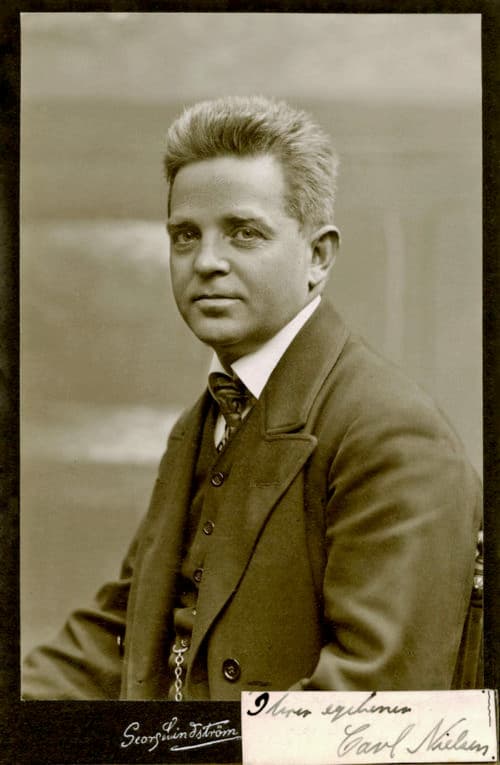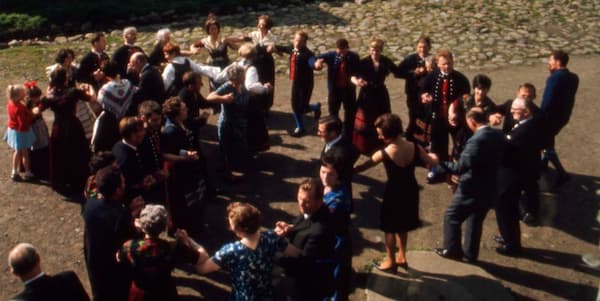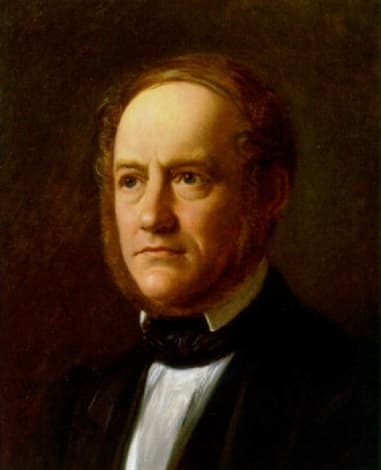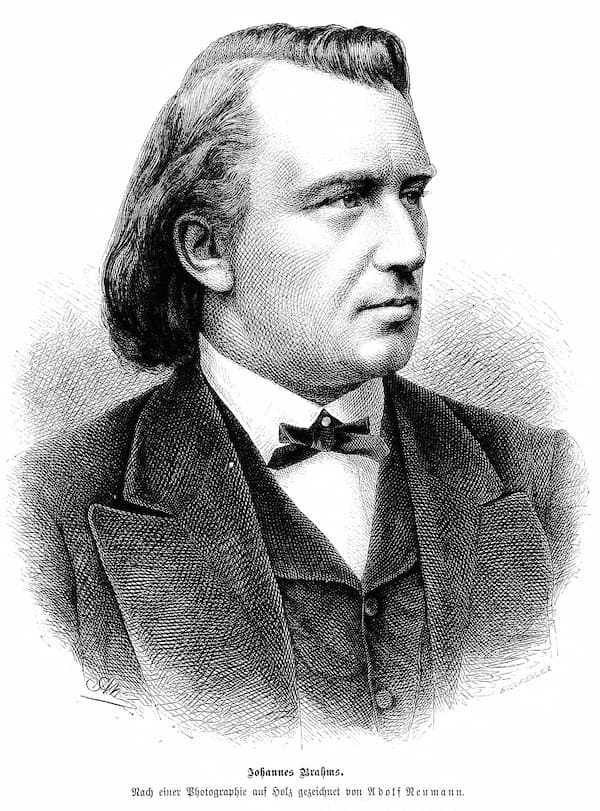Located nearly 1,400 km northwest of Denmark, the Faroe Islands were first under Norwegian rule in the 11th century and under Danish rule in the 16th century. During the 20th century, the language of the islands gradually grew away from Danish, and Faroese became the language of education, the church, and the law.

Carl Nielsen (Eastman School of Music Library)
In early 1927, a group of 50 Faroese were invited to Copenhagen for two concerts and exhibitions of their national dancing songs. Danish composer Carl Nielsen (1865–1931) was asked to write an overture for the event, and he responded with En fantasirejse til Faeroene (An Imaginary Trip to the Faroe Islands).

Faroese Chain Dancing (Photo: Adam Woolfitt)
Originally intended for concerts in January 1927, the premiere was postponed due to a flu epidemic in Copenhagen and then a delay due to bad weather holding up the ship from the islands. The Rhapsody-Overture received its premiere on 27 November 1927.
When he received the commission, Nielsen wrote to his wife about his delight in the assignment: ‘Now over the next 8-10 days, I have to write an overture to mark a big Faroese gala at the Royal Theatre supported by the State… I will use motifs from the Faroese ballads, and I can easily manage that, and it will give me some pleasure as it is good that we do something for them’. Although he later just called it ‘an occasional work’, he was actually quite happy working on it. As mentioned in the letter above, he used Faroese melodies in the work, but the beginning and the ending are his own compositions.
He made a detailed description of the work in an interview given to a couple. “I begin by describing the sea, as you feel it during the crossing – the monotonous mighty sea. It is quiet, but I think that it is precisely when the sea is calm that you most strongly sense its terrible depth… its depth and endlessness at the same time. During the voyage, we suddenly hear a bird cry that makes us think that we are near land. Of course, generally speaking, I am no great lover of programme music, but this time I think that the occasion called for a programme for the journey… some people on board now seem to see land, they get enthusiastic, a fanfare tells you, but the mist obscures the view, and it quietens down again. Then, new bird cries rise up, and the land looms ahead. The music grows in volume and seriousness and breaks into a Faroese melody; on the shore, many people are waiting to welcome us, and we hear them shouting and stamping. With no explanatory transition, I now place the traveller in the midst of a feast, with singing and dancing. I depict this feast in powerful music, where the ballad motifs play a role – and the depiction of the feast is interrupted by a Faroese folk tune. It calms down the music for a moment, creates a mood of gentleness amidst the dancing. But again, the feast livens up to dancing and merriment until the end – then it all subsides in one long note, a very low clarinet note that quietly fades away…’.
Carl Nielsen: Rhapsody Overture, FS 123, “En fantasirejse til Faeroene” (An Imaginary Trip to the Faroe Islands) (Gothenburg Symphony Orchestra; Myung-Whun Chung, cond.)
Nielsen conducted the premiere of the work and it received only two performances in his lifetime, both associated with the arrival of the Faroese musicians and dancers.
The most important of the Faroese songs he used was Påskeklokken Kimed Mildt, with a text by Carl Ploug.

Carl Ploug, 1863
The Danish poet Carl Ploug (1813–1894) wrote his poem in May 1858, using the melody from the Faroese folk song Olufukvæði. It was a commemoration of the Battle of Schleswig, where Danish forces were defeated by the Germans. Each verse of the poem closes with the invocation ‘Slutter kreds og står fast, alle danske mænd ! Gud, han råder, når vi fange sejren igen’. (Close the circle and stand firm, all Danish men! God, he will rule when we capture victory again.)
For more of the best in classical music, sign up for our E-Newsletter


